How many friends do you have?
You might not know the answer to that. You could look at your friend count on Facebook and look at your Instagram followers and you still wouldn’t know.
If I asked you: how many friends (not family members) do you have that you could call on the phone and ask for a big favor?
Most people would probably say less than five people.
I used to be in that camp too. The problem I had was most of them didn’t live in my city. I had zero friends I could call and ask for a favor where I lived. This was a problem.
So in 2018, I made over 200 new friends in one year. These are people I would be able to call anytime, ask for a favor, and feel confident that they happily follow-through with.
Let me show you how I accomplished this and how you can do it too.
The Power of People
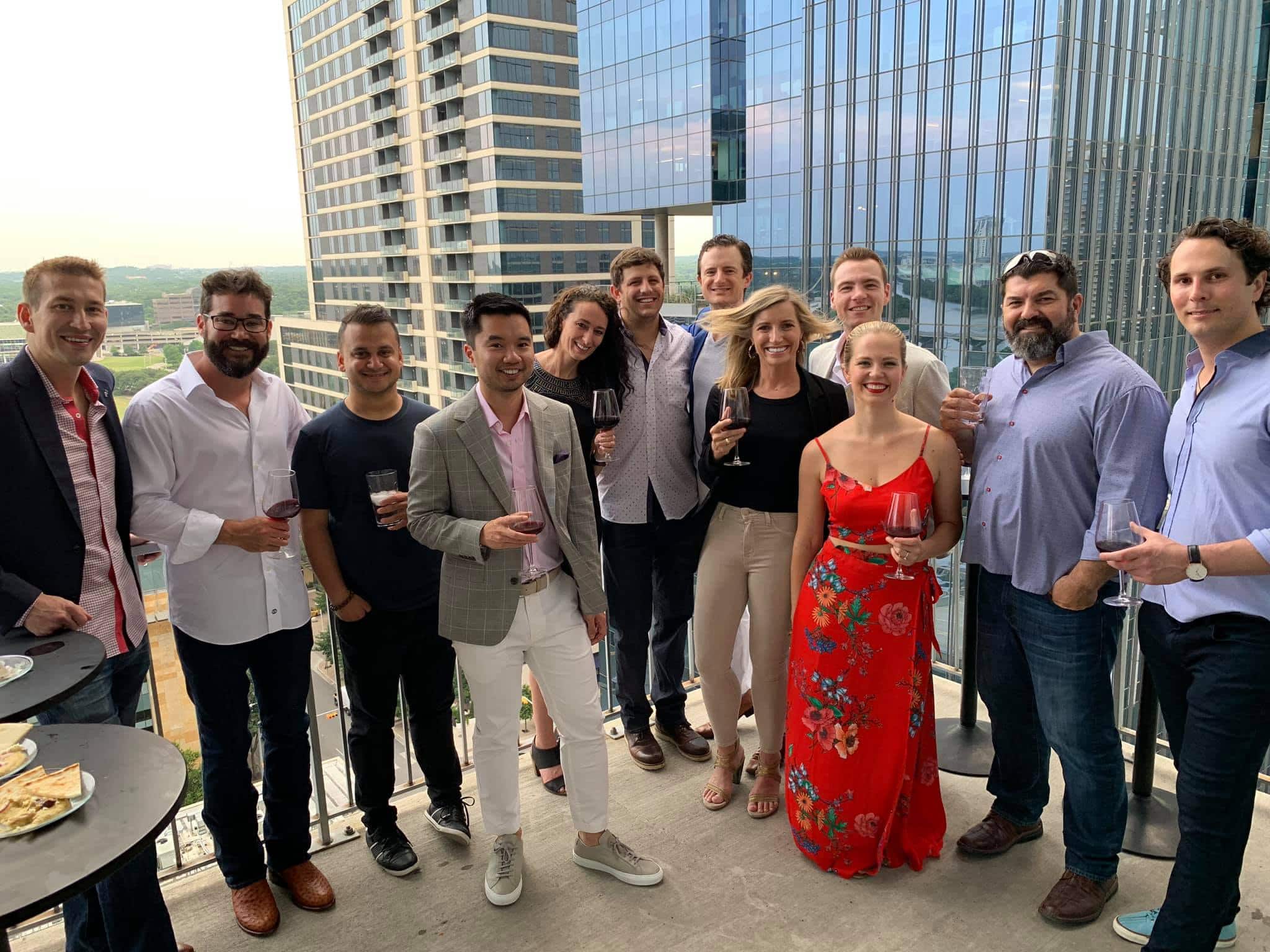
At AE we help people become more productive at work and in life. A big productivity lever is having people help you. Whether you need to delegate something, ask for advice, or need an answer to a question…people equals productivity.
Rather than trying to figure everything out on your own (inefficient), you can have the guidance, time, connections, and advice of others to get what you want. That’s Asian Efficient.
But there’s something even more powerful about having the right people in your life.
Your happiness goes up.
Here’s the problem though: making friends is hard.
As we get older and more settled in our lives, it becomes harder to meet people and make new friends. In college it was easy. You just walk around campus, go out, and you’ll make plenty of new friends.
But when we transition into post-college life and focus on our careers, the opportunities to make new friends dwindle. You might make a few friends at work but oftentimes they’re just your “work friends” and they aren’t people you would spend time with outside of work.
Many of us work from home and have no contact with other people at all. That was true for me. I started Asian Efficiency in 2011 and it’s been a fully remote company from day 0. I had no coworkers. On top of that, as the founder, I couldn’t date any of my team members (a hard boundary for me).
At age 29, I had five close friends but they all lived in other cities and countries. I had no close friends in Austin, TX where I lived.
Do you know the expression “money doesn’t buy happiness”? I can say that’s true. I had all this money, a great business, and time freedom but no friends to share life experiences with.
On the outside, I looked successful. On the inside, I felt empty and lonely.
Something had to change.
The Book That Changed My Life

A few years ago I read a book that changed my perspective on life and happiness. The book is called 30 Lessons for Living. The author interviewed elderly people who were about to pass away and he asked them all the same question:
“What’s one life lesson you would like to pass on to the next generation?”
He compiled the answers in thirty lessons and a major theme of the book is that our happiness is rooted in the quality of our relationships with the people around us. Your friends, family, siblings, and life partner.
Many elderly people wished they had a best friend in the latter stages of their lives. Many wished they didn’t work so much and had spent more quality time with the people they cared most about.
This got me thinking…do I have great relationships and friendships?
This made me think of an encounter I had earlier that day. I was walking down the street and recognized this guy. I knew his first name, said hi to him, we briefly chatted about our day, and then walked on.
I’ve seen this guy many times over the years and we always say hi.
But I didn’t know him as a person. I knew his name and occupation but that was it. I didn’t know anything else about him.
This was true for many people in my life. I knew their names, maybe what they did for a living but not as individuals.
So this guy, let’s call him Gary (not real name), was still a stranger to me. Maybe an acquaintance.
I had 200 Garys in my life where I knew their names, what they did for work, and nothing else.
On the surface level, it might seem I knew a lot of people but I felt like I didn’t know anyone. No wonder I felt lonely.
I didn’t have their contact info. We might be friends on Facebook but we never communicated outside of that.
I didn’t have their phone number. Even if I did, I wouldn’t have the courage to call them and ask for a favor.
Does this sound familiar to you?
When I share this story with others, many people can resonate. They know a lot of Garys and they can count on one hand how many close friends they have.
How to Turn Acquaintances into Friends
I had no close friends in town and I wanted to change that.
At least I knew a lot of Garys so I wasn’t a stranger to many people.
Yet that jump from acquaintance to friends seemed an impossible gap to close. Instead of having tons of shallow relationships, I wanted to cultivate more meaningful relationships with people.
So I asked myself: what can I do?
The timing of this happened to coincide with another event in my life that would answer the question.
My Friend Moves to Austin
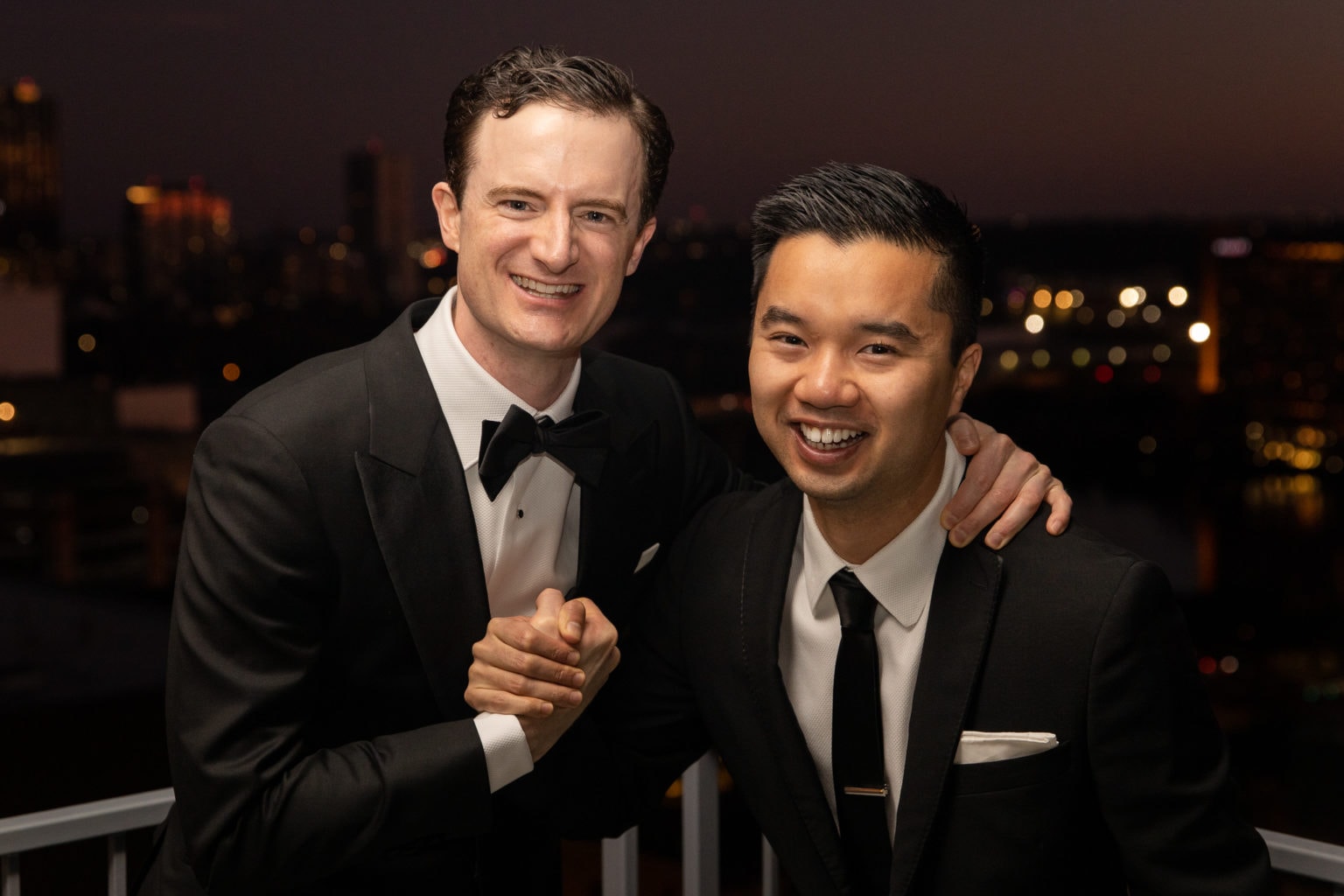
One of my dear friends, Tim Francis, ended up moving to my city. In fact, he lives in the same building as me.
A year earlier, I came to visit him in his hometown of Edmonton, Canada. When I arrived, he made me the guest of honor at a dinner party he hosted. He invited 8 other entrepreneurs for dinner and we had a great time sharing ideas, telling stories, and breaking bread. I will always remember that experience because I felt I made new friends.
When Tim moved to Austin a year later, I immediately to said to him:
“Remember that dinner party you did in your hometown for me? Let’s host dinner parties together in Austin and meet more like-minded people.”
He was onboard. Tim was new to town and eager to make new friends.
I wanted to make friends. So were both aligned on the same goals.
So in October of 2017, we hosted our first dinner party.
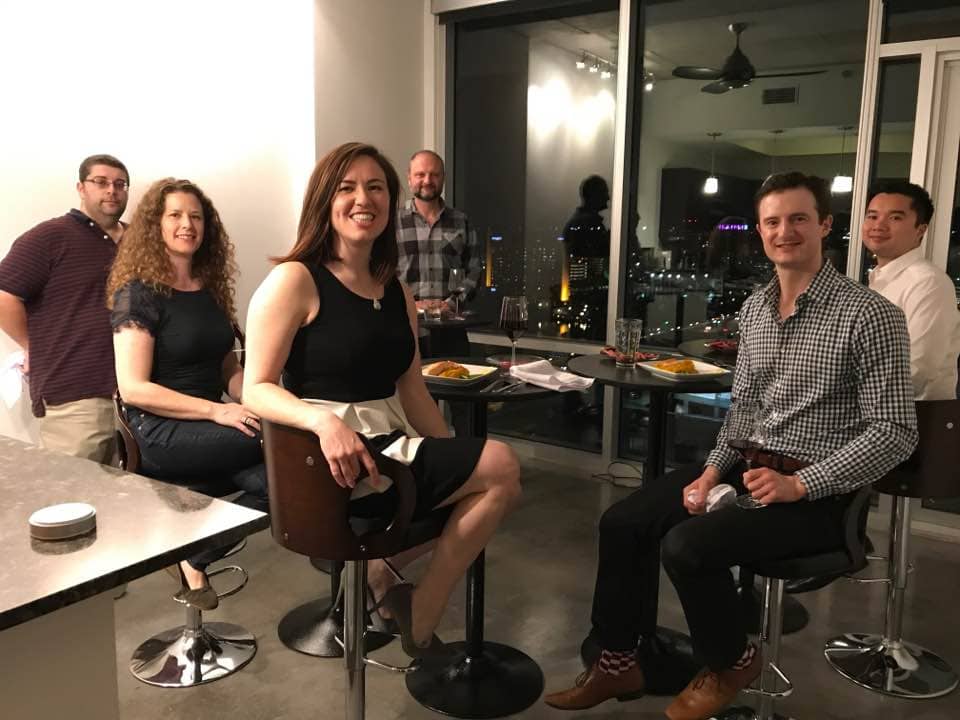
We got a group of four acquaintances together to try it out. We just had a few tables, ordered dinner from a restaurant, and chatted about life. It was simple. By the end of the dinner, we all felt like we were friends and could call each other anytime we needed help.
This was the first sign that the idea of having dinner parties to make friends was working. We weren’t quite sure what we were doing but we knew we were up to something special. We both felt it was worth doing to make new friends.
I don’t know about you but I’ve been to many big dinners where you don’t get to meet everyone at the dinner table because it’s too big. That’s something that always bothered me. I wanted to meet everyone but I couldn’t. You typically will only meet the people sitting next to you and directly across from you. If you sit at the corner of a table, you rarely meet the other people on the other side of the table.
When I brought up this challenge with Tim, we put our heads together to figure out how to create a dinner party where everyone got to know each other with up to 8 to 10 people. This would allow us to make the most out of time together. Why host a dinner party for four people when you can get the same results with eight people and with the same amount of effort?
This seemed like a problem we could solve. After running Asian Efficiency for a few years, no challenge has become impossible to overcome. One thing I’ve learned from business is that everything has already been figured out. If you need to fire someone for the first time…guess what. Someone has already done that before. Go find that person and ask him/her how to do it.
If you need to build a sales team, someone has already done that.
Need to document your whole business? Someone has done that too.
As I always like to say: “Everything has already been figured out. You just have to find the right person with the answer.”
I took that same mentality to make new friends and hosting dinner parties. In this case, that person was Google. After some research, we came across the concept of a Jefferson dinner party. It turns out that the third US President, Thomas Jefferson, had come up with a dinner party style that would allow everyone to meet every individual at dinner.
The Jefferson Dinner Party
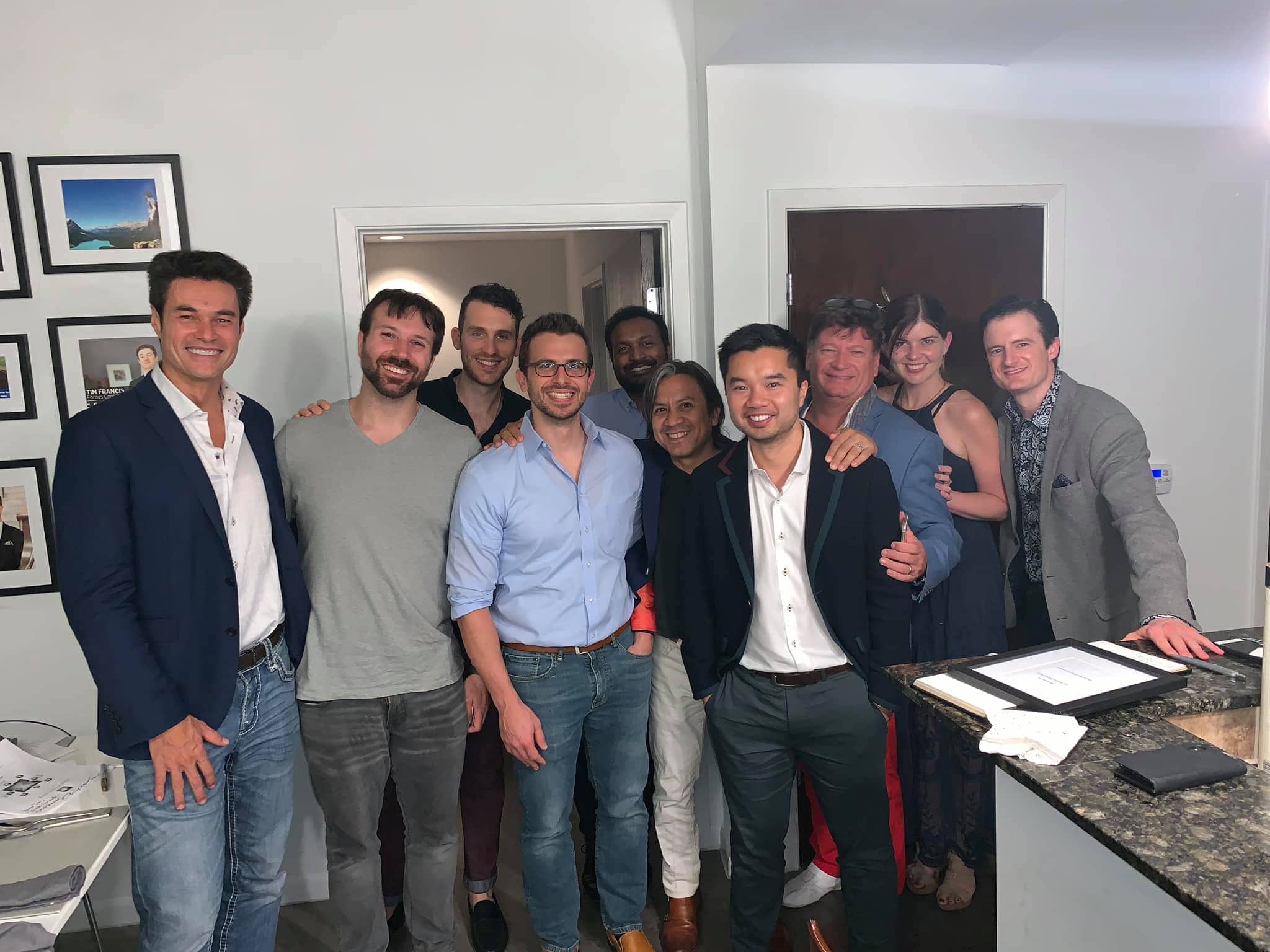
The idea behind a Jefferson dinner is that there’s only one conversation going on at all times and every dinner had a purpose. There are no side conversations or just two people conversing. When someone would speak, it would be for everyone to hear at the dinner table.
It’s different from a regular dinner where there’s lots of small talk and chitchat. This concept was different because people are curated and invited to come to a dinner that had a specific purpose. For example, Thomas Jefferson wanted to have a non-profit get more funds to advance higher education. So he would curate and invite people who aligned with that such as teachers, professors, founders of other non-profits, people who are known to invest in non-profits, and so on.
By having a specific purpose and curating the guest list, there was an element of wanting to meet everyone and a conversation topic to talk about.
In our case, the purpose would be to bring our Austin community together offline. Many of us are online too much and never get to connect with real humans in an offline setting. We wanted to get to know our acquaintances and turn them into friends but also for our friends to meet other like-minded friends.
Another unique feature about a Jefferson dinner is that there’s a moderator who guides the prompts, topics, and tempo of the dinner. One of the things the moderator looks for is to ensure everyone spoke at least once to the whole group. It makes everyone feel included and heard.
After our first dinner, we were committed to implementing this style of a dinner party and see how it would go.
The Skyline Dinner Party
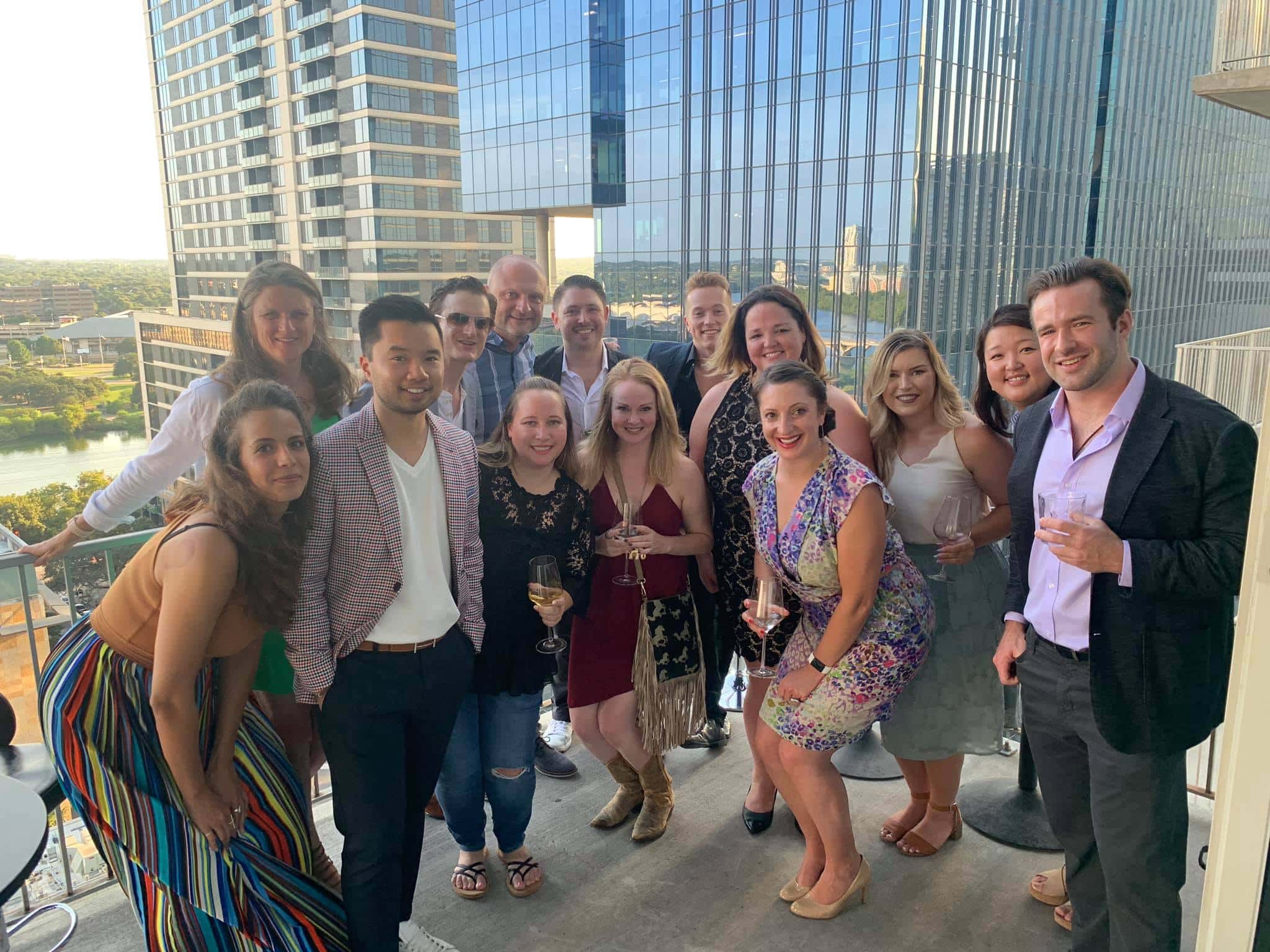
We got to work. The first thing we needed was to give this dinner thingie a name. One thing we’ve both learned in business is that every product needs a good name that entices people. This dinner party was no different.
Instead of telling someone to come to “dinner”, we wanted to have a cool name for it so people would be able to reference it and think it’s not a typical dinner.
We called it the Skyline Dinner Party as we overlooked the skyline of downtown Austin.
Next, we had to figure out a format for the dinner. This is where we took pieces of the Jefferson dinner party as the foundation and over time we gave it our own twist. I won’t bore you with all the details but it took us a lot of iterations to get the format we wanted.
We ended up hosting 22 dinner parties in 2018. That’s almost two every month. If you’ve ever hosted a dinner at home, you know how much work and effort that is. You have to clean, flip the space, cook, host, clean after, wash the dishes and so much more.
But we didn’t think of that when we started. Since both Tim and I follow the Scrum methodology in our companies, we just got started and iterated after each dinner party to make it better, smoother and less effort on our part.
Each dinner ended around 11PM and afterward, we would do a retrospective (borrowed from Scrum). We would ask ourselves:
- What went well?
- What didn’t go well?
- What could we do better next time?
This process would take about two hours to complete each time and we were committed to implementing all the ideas for the next Skyline Dinner Party. By Skyline Dinner Party #15, we felt we finally found a rhythm and flow to our dinner structure.
The beautiful part of the whole process is that we invited new people for every dinner. Our dinner table could host 10 people so that meant every dinner party we had eight new people. For them, it was a new experience but for Tim and me, it was a new opportunity to refine our flow and experience for the guests.
At the end of each dinner, we asked our guests what they enjoyed the most of the dinner party. We took notes and combined with the retrospective, each dinner party became a little better each time. This was a good example of kaizen (one of our core values at AE).
We also asked them if they knew someone who should join one of our Skyline Dinner Parties. People were glad to refer others because they had a great time. Everyone loved the Skyline Dinner Party and it became “a thing” in Austin that people wanted to come to. People kept referring other people to go and messaging us to invite such and such person. At one point we had a waitlist of 130+ people who wanted to come.
From 20 Acquaintances to 200 New Friends In One Year
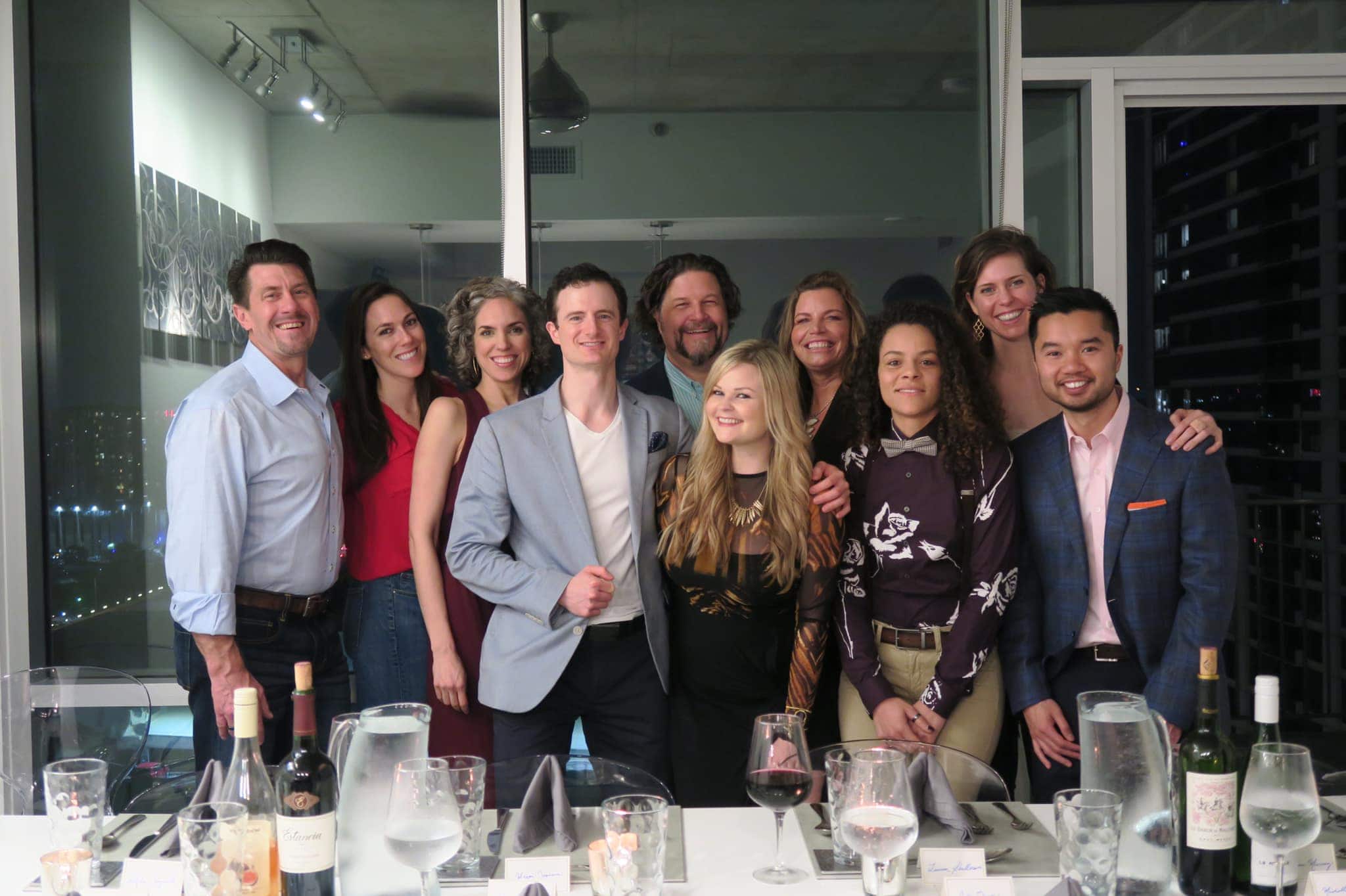
It started with 20 acquaintances that I knew and a few people that Tim knew. We invited people we barely knew over for dinner and at the end of each dinner party, I felt I made eight new friends. I got to hear their life stories and I knew what excited them in life.
This is something I didn’t anticipate when I started hosting. When you start hosting and people have a great time, they start inviting you to their social events and dinners. This is how I ended up getting to know a lot of people and make new friends around town.
One year and twenty-two Skyline Dinner Parties later, I made over 200 new friends.
If I were to move to a new city or country and I wanted to make friends, this is exactly what I would do all over again. I would host a dinner and anytime I run into someone, I would invite them to come over.
By having that “landing spot”, that made it easy for me to get someone’s contact info anytime I ran into someone.
“Hey, I host the Skyline Dinner Party where I bring together like-minded people for a fun evening. I’d like to invite you and your significant other some time. What’s your number?”
Now you have a reason to follow up and stay in touch. Anytime I hosted another Skyline Dinner Party, I would message people to come.
Rinse and repeat and that’s how I made all these new friends. Sounds simple, right?
Investing in Relationships
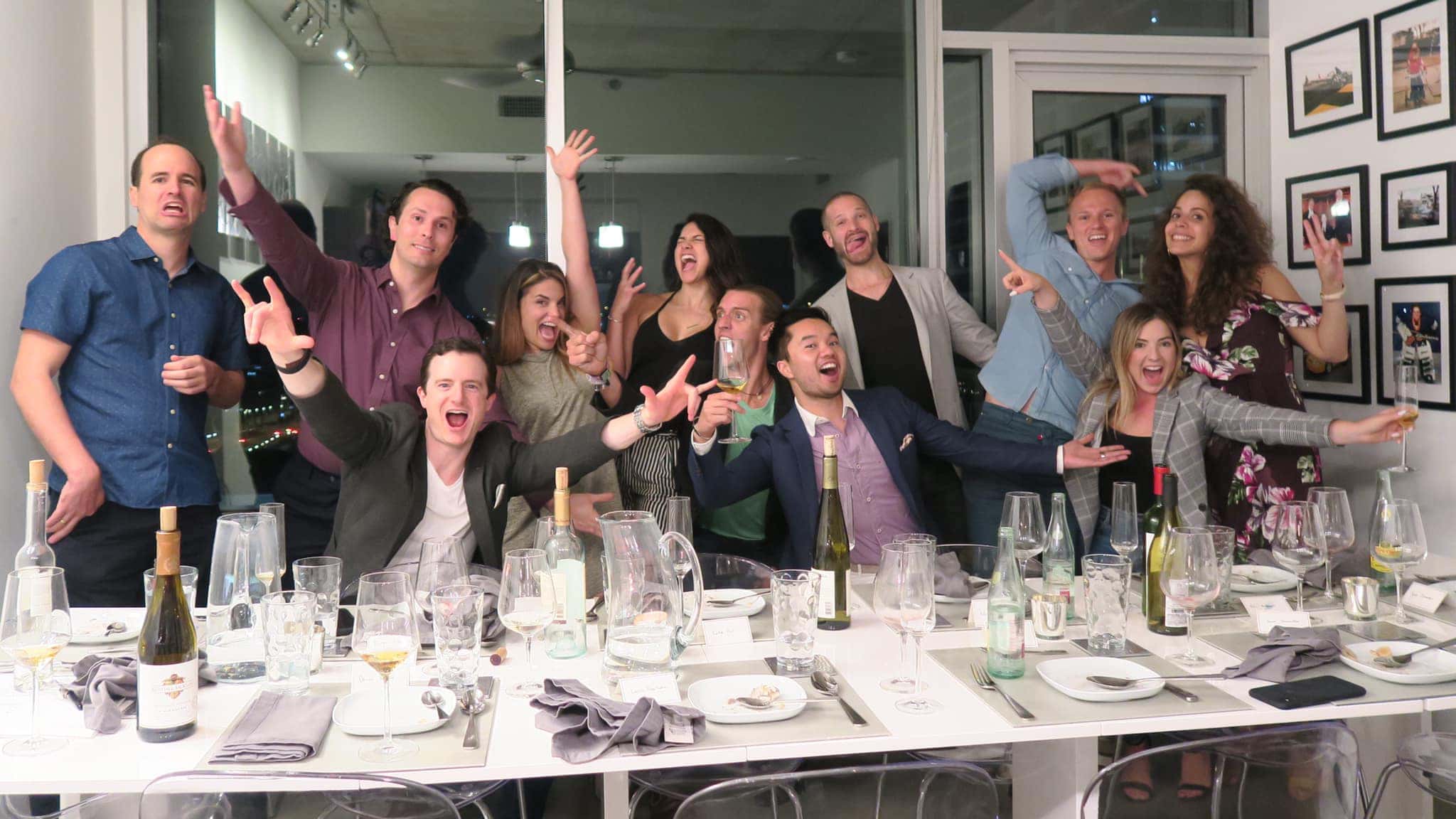
Hosting all these dinner parties takes time and effort. When you take into account that each dinner is about 4 hours long and you add up all the time for the retrospectives, setup, communicating with guests, etc it comes out to roughly 10 hours of effort for each dinner party.
That means in one year I’ve spent over 220 hours on the dinner parties. That’s just time. Let’s not forget the monetary aspect of it. Without going into too much detail, the major cost of each dinner party goes to staffing (event host, cleaners) and food/beverage. Each dinner roughly cost us $700 total. That’s over $15,000 we spent on dinner parties in a year ($7,500 each).
At first, that might seem like a lot of money.
So let’s get geeky for a second.
In business terms, the “friend acquisition cost” was $37.50 per person. In other words, I spent $37.50 to make a new friend ($7,500 divided by 200).
When you go to a random networking event, you might pay $20-$100 to get in. Once you meet people there, you’re still not quite friends yet. So you have to go out for lunch or dinner and I’ve found usually after just one of them you’re closer to being friends but you’re not quite there just yet. You might feel more comfortable shooting them a text but calling them a “friend” might be a bit of a stretch.
So it takes a few encounters, lunches, and dinners before you can call that person a friend. By that point, you probably have spent way more than $37.50.
To give you another example that’s a bit more extreme. I’ve been part of $25,000/year masterminds for entrepreneurs where you meet four times a year and network. I’ve met maybe 5 people from them which means it cost me $5,000 per friend.
In the grand scheme of things, the $37.50 cost is relatively low compared to the typical examples from above. It doesn’t take into account the benefits of all the other things that come with hosting a dinner party. The branding of the event, the personal brand, the referrals that come with hosting, and the value created between the guests that they will always remember that you created for them.
Even when I take out all the math, I was happy to spend $7,500 to make 200 new friends. I could have easily spent that money on other stupid things that would have very little effect on my long-term happiness.
Looking back, that’s the best money I’ve spent in the last decade. It was worth more than any conference, trip, or Louis Vuitton bag I’ve purchased.
Now I’m in a position where I can ask friends for help, advice, or just to catch up to feel connected.
Anytime I want to grab lunch or dinner, I have someone I could message.
I’m never alone anymore.
When I see friends who were at the same Skyline Dinner Party connect and become friends, it makes me so happy. That’s something you cannot put a price on.
There are so many benefits to having lots of friends and a great network. You never know how it might come in handy. Here are some examples of situations where I benefited from my friends that I met through the Skyline Dinner Party in ways I could have never anticipated:
- I got upgraded on a flight because my friend is a GM at a major airline and saw me at the airport.
- When the pandemic arrived, friends were messaging me and making sure I was okay, and giving me resources I might need.
- Someone got me a last-minute reservation at a popular restaurant on a Friday night (that’s normally fully booked for months) because they knew the owner of the restaurant and pulled in a favor.
- Someone upgraded me to front row seats to an Aziz Ansari and Dave Chappelle show (sold out) for a date night.
And there have been countless examples of random things that have enriched my life.
It all started by hosting a fun dinner party.
Conclusion
Whether you’re single, married, have kids, or whatever your situation is – if you want to make friends, start hosting. It doesn’t have to be a dinner party like I did. It could be anything like board game nights, Sunday brunch, or weekend workouts.
Not many people take the time and effort to host. They’re concerned about people not showing up, it might be intimidating, it might be new to them, and other various reasons.
This is why this is a major opportunity for you to step in and take advantage of that. People don’t like to host but they love to be invited and come to meet you and others. We’re social creatures and we thrive on friendships and relationships.
As the host, you get to dictate what fun things happen and you’re inviting others to come into your world. Usually, when people come, it’s because they enjoy what you’ve planned for and they want to meet you and other like-minded people.
Start hosting and do it consistently. I will guarantee you that you’ll make new friends and be a lot happier.
As I always like to say:
Happy people are productive people.

Dude, that's incredible! Congratulations man, holy shit this is inspiring!
What a timely article as people seek to make up for the social time lost! Would love to see additional details surrounding this either in another post, series, or for purchase!
I wish this had worked for me. Pre-pandemic, I invited people to parties. In the course of about 2 and a half years, I made 8 parties to which I invited about 100 people (total, across all 8). No one ever reciprocated. In fact, I don’t even speak to the vast majority of attendees anymore. I was always taught that the way to make friends was to invite people to parties, but it was a complete fail for me.